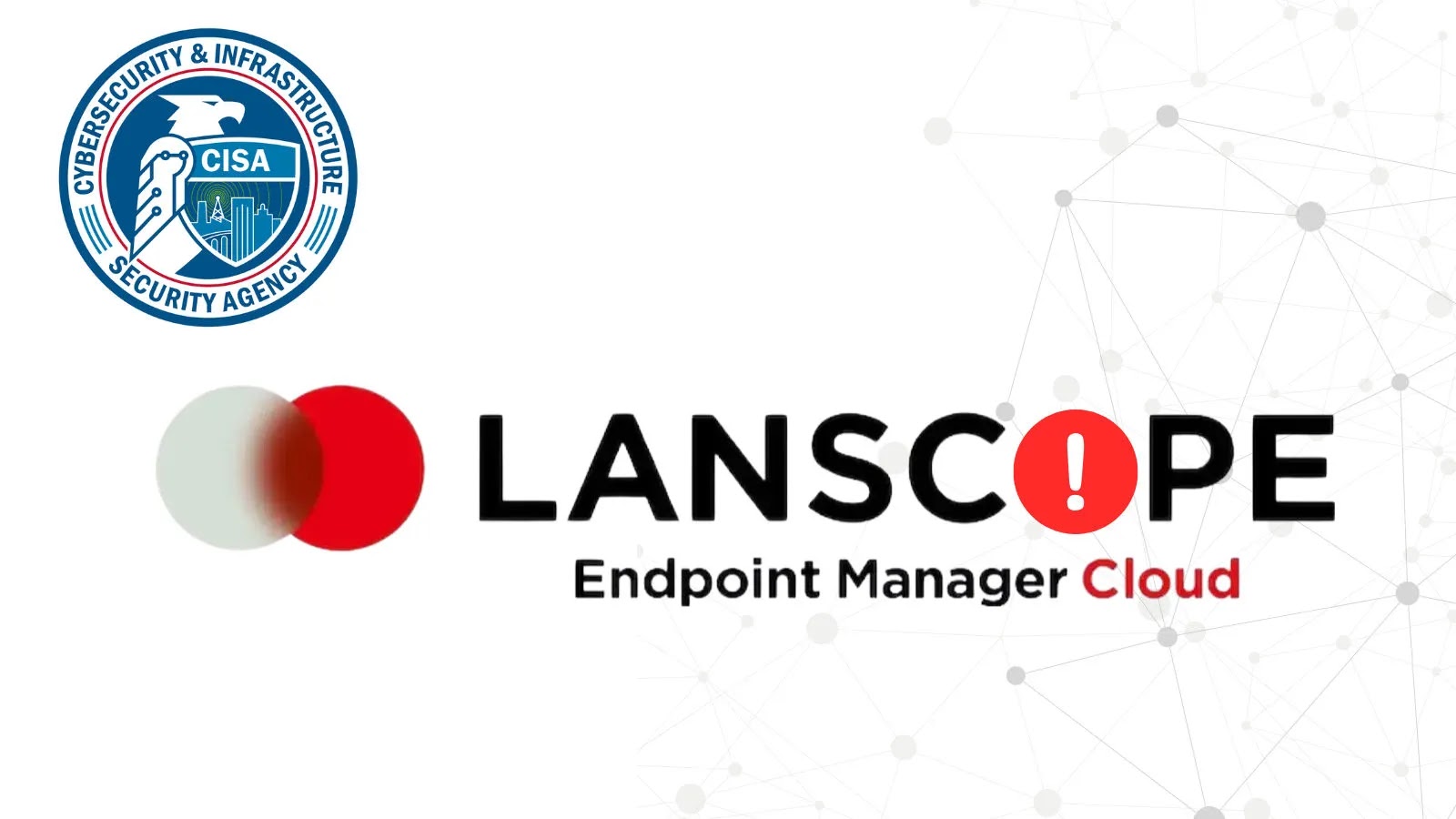
CISA Warns of Motex LANSCOPE Endpoint Manager Vulnerability Actively Exploited in the Wild
CISA Warns of Motex LANSCOPE Endpoint Manager Vulnerability Under Active Exploitation
Cybersecurity agencies rarely issue warnings without significant cause. The recent alert from CISA regarding a critical vulnerability in Motex LANSCOPE Endpoint Manager is no exception. This isn’t a theoretical threat; it’s a vulnerability actively exploited in the wild, demanding immediate attention from IT professionals and security analysts managing network assets. Organizations leveraging Motex LANSCOPE Endpoint Manager must act swiftly to understand the risks and implement the necessary remediations.
Understanding the Motex LANSCOPE Vulnerability: CVE-2025-61932
The core of this critical issue lies in an “improper verification of the source of a communication channel” flaw. Tracked as CVE-2025-61932, this vulnerability allows unauthorized attackers to achieve arbitrary code execution on affected systems. The mechanism is disturbingly simple: an attacker can send specially crafted packets to a vulnerable Motex LANSCOPE Endpoint Manager instance. If successful, this can lead to full system compromise, data exfiltration, or further network penetration. The severity of arbitrary code execution, especially in an endpoint management solution that often has elevated privileges across an organization’s IT infrastructure, cannot be overstated.
The Threat of Active Exploitation
CISA’s warning emphasizes the urgency of this situation. “Actively exploited in the wild” means malicious actors are already leveraging this flaw to compromise systems. This moves the vulnerability from a theoretical risk to an immediate, tangible threat. Organizations using Motex LANSCOPE Endpoint Manager should assume their systems are targets, or potentially already compromised, until proven otherwise. This underscores the need for rapid identification of vulnerable assets and the prompt application of security measures.
Impact on IT Asset Management and Network Security
Motex LANSCOPE Endpoint Manager is widely used for IT asset management, patch deployment, software distribution, and compliance enforcement. A compromise of this central management tool provides attackers with a powerful pivot point. An attacker gaining control could:
- Deploy malicious software to all managed endpoints.
- Exfiltrate sensitive data from across the network.
- Manipulate system configurations to facilitate persistent access.
- Disrupt critical IT operations.
The widespread implications for network security and overall organizational resilience highlight the critical nature of this vulnerability.
Remediation Actions and Mitigation Strategies
Given the active exploitation of CVE-2025-61932, immediate action is paramount. Organizations must:
- Identify Affected Systems: Determine all instances of Motex LANSCOPE Endpoint Manager deployed within your environment.
- Apply Patches Immediately: Monitor official Motex channels for security updates and patches addressing CVE-2025-61932. Prioritize their deployment across all identified systems. This is the most critical step.
- Isolate Vulnerable Systems (if patching is not immediate): If patching cannot be performed instantly, consider temporarily isolating Motex LANSCOPE instances from direct internet access or placing them behind stringent firewall rules that restrict communication to only absolutely necessary endpoints.
- Review Logs for Suspicious Activity: Scrutinize logs from Motex LANSCOPE Endpoint Manager, network devices, and endpoint detection and response (EDR) solutions for any indicators of compromise (IOCs) such as unusual outbound connections, unauthorized process execution, or configuration changes.
- Implement Network Segmentation: Ensure that your Motex LANSCOPE server is placed in a properly segmented network zone, limiting its ability to communicate freely with other sensitive parts of your infrastructure.
- Enforce Principle of Least Privilege: Verify that the Motex LANSCOPE service accounts operate with the minimum necessary permissions.
Tools for Detection and Mitigation
Organizations can leverage various cybersecurity tools to aid in the detection and mitigation of this and similar vulnerabilities. While specific tools for CVE-2025-61932 might be proprietary according to the vendor, general security practices recommend:
| Tool Name | Purpose | Link |
|---|---|---|
| Vulnerability Scanners (e.g., Nessus, Qualys) | Identify known vulnerabilities, including potentially unpatched LANSCOPE instances. | Tenable Nessus |
| Network Intrusion Detection/Prevention Systems (NIDS/NIPS) | Detect and block suspicious network traffic patterns indicative of exploitation attempts. | Snort |
| Endpoint Detection and Response (EDR) solutions | Monitor endpoint behavior for signs of compromise and provide remediation capabilities. | Splunk UBA (Endpoint Security) |
| Security Information and Event Management (SIEM) | Aggregate and analyze security logs for early detection of anomalous activity. | IBM Security QRadar SIEM |
Key Takeaways for Cybersecurity Professionals
The CISA warning concerning the Motex LANSCOPE Endpoint Manager vulnerability, CVE-2025-61932, is a critical reminder of the pervasive and evolving threat landscape. The ability for attackers to achieve arbitrary code execution via specially crafted packets highlights the importance of timely patching and robust security practices. Organizations must prioritize the remediation of this flaw, implement continuous monitoring, and maintain a proactive security posture to defend against actively exploited vulnerabilities.





